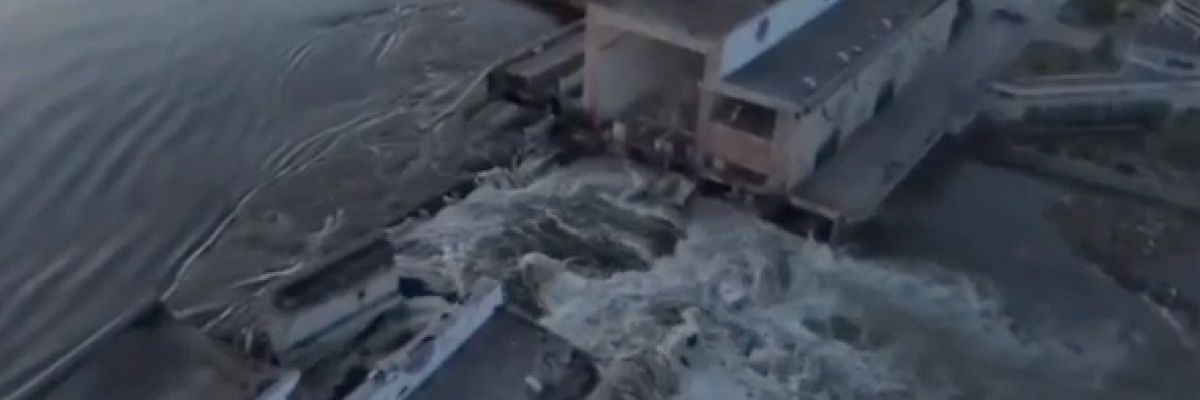Already heightened concerns about the operational safety of the Zaporizhzhia nuclear power plant in southeastern Ukraine intensified further on Tuesday after a major downriver dam was destroyed, forcing thousands to evacuate as water surged through the breached structure.
The wrecked barrier held back a body of water equal in size to Utah's Great Salt Lake, and the reservoir supplies water for the cooling of the Zaporizhzhia facility, the largest nuclear power plant in Europe. The reservoir also serves as a key source of drinking water.
Ukraine and Russia blamed each other for the dam's destruction, which would constitute a war crime under the Geneva Conventions. Reutersnoted that "neither side offered immediate public evidence" to substantiate their accusations.
The International Atomic Energy Agency (IAEA), which has been monitoring the Zaporizhzhia plant for months and vocally warning about ongoing threats to its integrity, said Tuesday it was closely examining the fallout from the dam breach but there was "no immediate risk to the safety of the plant."
But Rafael Mariano Grossi, the IAEA's director-general, stressed Tuesday that an "absence of cooling water in the essential cooling water systems for an extended period of time would cause fuel melt and inoperability of the emergency diesel generators" at Zaporizhzhia, which is currently controlled by Russian forces.
The plant is roughly 90 miles upriver from the breached dam.
"The main line of cooling water is fed from the reservoir and pumped up through channels near the thermal power plant to the site," said Grossi. "It is estimated that the water through this route should last for a few days. Water in the reservoir was at around 16.4 meters at 8:00 am. If it drops below 12.7 meters, then it can no longer be pumped."
Grossi noted that "there are a number of alternative sources of water," including a "large cooling pond next to the site that by design is kept above the height of the reservoir."
"It is therefore vital that this cooling pond remains intact. Nothing must be done to potentially undermine its integrity," he added. "I call on all sides to ensure nothing is done to undermine that. My trip to ZNPP next week was planned and now it is essential. I will go."
The Associated Pressreported Tuesday that "the potentially far-reaching environmental and social consequences of the disaster quickly became clear as homes, streets, and businesses flooded downstream and emergency crews began evacuations."
James Elder, a UNICEF spokesperson, said in a statement that the impacts of the dam's destruction will be acutely felt by children, many of whom will be left homeless and without reliable access to clean drinking water.
"This is yet another merciless attack on infrastructure that is vital to the well-being of everyday Ukrainians," said Elder.
Outside experts and critics of nuclear power have been warning for more than a year that the longer the war drags on, the greater the threat of a catastrophe at Zaporizhzhia, which has already been significantly damaged by shelling.
In a March 2022 report, Greenpeace wrote that "in the event of a loss of cooling and resultant fire in any of the spent fuel pools at Zaporizhzhia, the potential for a very large release of radioactivity would have a devastating effect not only on Ukraine but also its neighboring countries, including Russia, and potentially, depending on the weather conditions and wind directions, on a large part of Europe."
Ukrainian and Russian officials traded blame for the disastrous dam breach.
Ukrainian President Volodymyr Zelenskyy tweeted Tuesday that Russia "blew it up," an alleged attack that he called a "bomb of mass environmental destruction."
Kremlin spokesman Dmitry Peskov, for his part, said during a news briefing that "we can state unequivocally that we are talking about deliberate sabotage by the Ukrainian side."
Meanwhile, according toReuters, "some Russian-installed officials said the dam had burst on its own."

